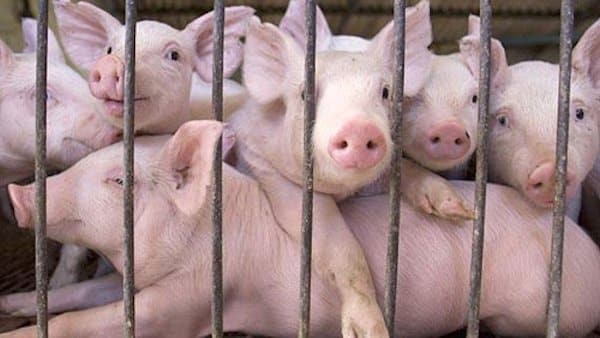At the 2013 Subversive Festival in Croatia, Marxist writer Richard Seymour was asked by an interviewer whether he believed the dichotomy between revolutionaries and reformists in the context of class struggle was useful. His answer, I think, would help inform similar debates held between animal advocates who seek for non-humans revolutionary and reformist change, or what is also called abolitionist and welfarist change.
“Well I think the categories matter,” Seymour said. “I think there is a difference between reformists and revolutionaries. But the problem is that in practical terms today, we are all reformists in terms of what we can actually do.” It’s my firm belief the animal movement needs a strong dose of such sobriety, and we must realistically assess the political landscape in which we find ourselves. Abolition, animal liberation, species revolution — whatever one might call it — is simply not on the table at the present moment. We can delude ourselves that this is not the case or curse our luck for being born into an era in which the possibilities of change for non-humans is, at least for the immediate future, rather limited. But ultimately this won’t change anything or help animals. Like it or not, all that’s possible in the present moment is reform, which in practical terms makes us all reformists, whatever we might call ourselves.
Still, Seymour believed the categories mattered to some degree. “There was an old argument made by Alasdair MacIntyre who used to be a member of the International Socialist Group, a Trotskyist group,” Seymour said. “He basically said that there was a law, a little known law, known as the diminishing returns of socialism, which meant that basically under capitalism there was a pressure for everybody to act somewhat to the right of their nominal beliefs. Therefore the only people who would probably take a radical stance regarding capitalism would actually be revolutionaries. In practical terms that often turns out to be the case.” If I’m interpreting Seymour correctly here, what he’s saying is that in conservative periods, revolutionaries are limited to pursuing reforms and reformists generally don’t take an oppositional stance at all. No doubt the same holds true for abolitionists and welfarists within the context of the animal question.
“In real terms there is very little in the way of a revolutionary agency that we could activate,” Seymour said. “So therefore most of the time what we’re doing is trying to advocate reforms that will strengthen the agencies that would be capable of being mobilized in the event of a revolutionary situation.” In other words, there is simply no revolutionary potential in the present historical moment, whether it be for the working class or animals. So revolutionaries are limited to pursuing reforms not due to lack of commitment or incorrect theory, but because reform is all that is possible in the current era.
“I think the sociologist Goran Therborn had some insight here,” Seymour said. “He pointed out that really being revolutionary or reformist for most of the working class is not a question of ideology or subjectivity. I mean that’s part of it. But the most important question is the context, the circumstance. Whether they’re revolutionized or not depends whether or not they’re in a situation which seems to demand a revolution. And that’s really the appropriate way to think about it.”
I believe this point regarding the historical context being more important than ideology in revolutionizing the human masses against capitalism is crucial in relation to understanding how the human masses will be revolutionized against domestication. So the question is: how can we create a situation in which revolution for animals seems inevitable? To me, the most obvious situation which would begin to produce such anti-speciesist consciousness would be one in which in-vitro meat, or similar analogs, required less labor to produce and were gastronomically superior than the slaughtered flesh of animals. We are not yet at this point, but we can certainly speed it along by pouring the funds to which the animal movement has access into relevant research.
“To me, most of the time these dichotomies are used in a sectarian and moralizing way,” Seymour said, concluding his remarks on the usefulness of the categorizing revolutionaries and reformists. In a similar way, I believe equivalent dichotomies within the animal movement are unnecessarily divisive and used to shut down debate regarding strategy, given that reform, like it or not, is all that’s possible at the present moment in terms of the exploitation of animals.
Jon Hochschartner is a freelance writer from upstate New York. Visit his website at JonHochschartner.com.



